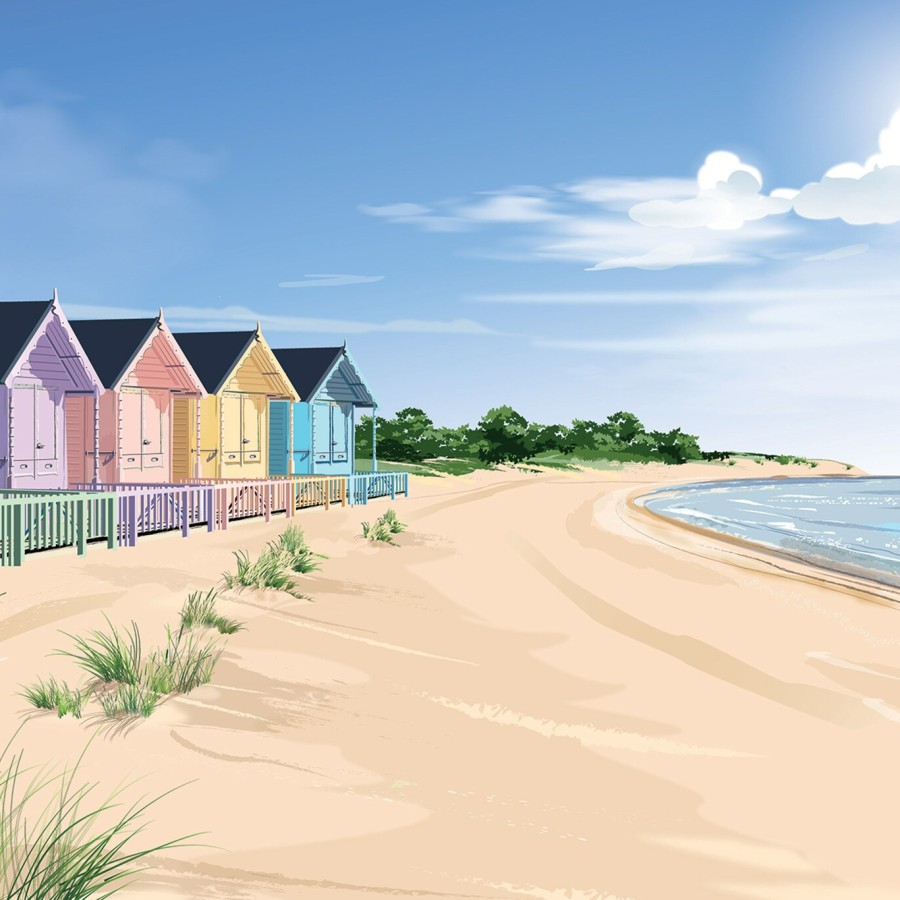
No matter where you live in England, you are never more than 80 miles or so from the sea (the most central village is either in Leicestershire or Derbyshire – there are debates!) However, we also many other islands, apart from England itself. We obviously have the bigger islands (the Isle of Wight and the Isles of Scilly – a series of many islands, only 5 are inhabited). But there are also many tiny islands, some with people living on them, others only puffins! Let’s have a quick island-hopping (armchair) tour!
Mersea Island (Essex) is perhaps surprising – it looks more like a Floridian seaside paradise, but in fact is only a short hop from Colchester! It gets cut off twice a day at high tide, so always look for the correct times to cross the causeway. Don’t even attempt to cross if the road is covered – this not only is inconvenient for you but also means emergency services have to come out. The local council says to keep away – unless you have a ‘James Bond’ car or are Chitty Chitty Bang Bang!
Brownsea Island (Dorset) lies just off the coast of Poole, near Bournemouth. Owned by the National Trust, this is home to lots of wildlife including red squirrels (due to native trees, grey squirrels are not the main reason for them being endangered, it’s lack of knowledge on providing correct habitats and food). It also boasts an open-air theatre.
St Michael’s Mount (Cornwall) is a small island off the coast of Cornwall which has dodgy cobbled paths, so only really suitable for fit visitors (they also don’t allow dogs, simply due to lack of shady places, for their welfare). They also advice not visiting if you are pushing wheelchairs, pushchairs or prams).
Lundy Island (Devon) lies off the north Devon coast, and is known for its population of native seals (far more than the people population, which numbers just 28! It’s only 4 miles long, so there are no roads or cars. Some people who take the small boat across sometimes are able to see dolphins playing in the local waters.
Burgh Island (Devon) lies off the south Devon coast, and features a beautiful white hotel that is often featured in Agatha Christie TV series. It has a unique sea tractor that crosses over at high tide, though at low tide you can walk across the wide sandy beach to the Art Deco building.
Hayling Island (Hampshire) lies near the maritime city of Portsmouth. A popular holiday spot for a bucket-and-spade holiday, it has pretty beach huts and a real outdoor lifestyle. However local marine creatures have been at risk from the many jetskis, so either avoid them (best) or if used, follow the local rules, to ensure wildlife stays safe.
Portland (Dorset) is an island off the Jurassic coast and known for its iconic Portland Bill (red and white stripes) that looks out on coastal traffic. Portland Castle is still in good condition and ideal for the history-loving holidaymaker.
Holy Island (Lindisfarne) sits off the coast of Northumberland, and is known for having people stuck adrift in cars, when they don’t read the tide time tables (it’s cut off at high tide). Previously home to hermits like St Cuthbert, today it still has a Catholic church but is a bit more touristy. Nearby are the Farne Islands (no people aside from working volunteers) that is the favourite wildlife-watching spot of Sir David Attenborough – puffins, seabirds and seals galore.
Belle Isle (Cumbria) is the largest of the 18 islands in the beautiful Lake District. It’s the only one that anyone has ever lived on, though it’s only 1km long. Some say the village once there was possibly connected to Ambleside’s nearby Roman fort.
Isle of Dogs (London/Essex) is not really an island, more a peninsula that juts out into the River Thames opposite Greenwich and Deptford. Home to Canary Wharf.






